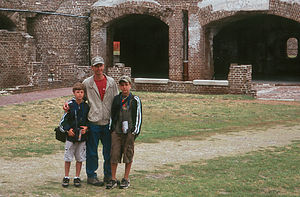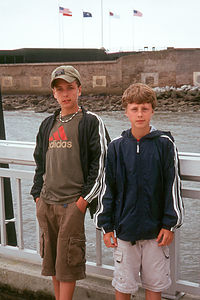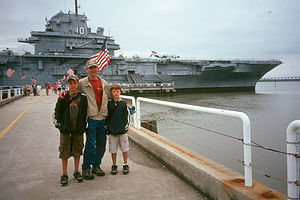- Home
- About
- Map
- Trips
- Bringing Boat West
- Migration West
- Solo Motorcycle Ride
- Final Family XC Trip
- Colorado Rockies
- Graduates' XC Trip
- Yosemite & Nevada
- Colorado & Utah
- Best of Utah
- Southern Loop
- Pacific Northwest
- Northern Loop
- Los Angeles to NYC
- East Coast Trips
- Martha's Vineyard
- 1 Week in Quebec
- Southeast Coast
- NH Backpacking
- Martha's Vineyard
- Canadian Maritimes
- Ocracoke Island
- Edisto Island
- First Landing '02
- Hunting Island '02
- Stowe in Winter
- Hunting Island '01
- Lake Placid
- Chesapeake
- Provincetown
- Hunting Island '00
- Acadia in Winter
- Boston Suburbs
- Niagara Falls
- First Landing '99
- Cape Hatteras
- West Coast Trips
- Burning Man
- Utah Off-Roading
- Maui
- Mojave 4WD Course
- Colorado River Rafting
- Bishop & Death Valley
- Kauai
- Yosemite Fall
- Utah Off-Road
- Lost Coast
- Yosemite Valley
- Arizona and New Mexico
- Pescadero & Capitola
- Bishop & Death Valley
- San Diego, Anza Borrego, Joshua Tree
- Carmel
- Death Valley in Fall
- Yosemite in the Fall
- Pacific Northwest
- Utah Off-Roading
- Southern CA Deserts
- Yosemite & Covid
- Lake Powell Covid
- Eastern Sierra & Covid
- Bishop & Death Valley
- Central & SE Oregon
- Mojave Road
- Eastern Sierra
- Trinity Alps
- Tuolumne Meadows
- Lake Powell Boating
- Eastern Sierra
- Yosemite Winter
- Hawaii
- 4WD Eastern Sierra
- 4WD Death Valley +
- Southern CA Deserts
- Christmas in Tahoe
- Yosemite & Pinnacles
- Totality
- Yosemite & Sierra
- Yosemite Christmas
- Yosemite, San Diego
- Yosemite & North CA
- Seattle to Sierra
- Southwest Deserts
- Yosemite & Sierra
- Pacific Northwest
- Yosemite & South CA
- Pacific Northwest
- Northern California
- Southern Alaska
- Vancouver Island
- International Trips
- Index
- Tips
- Books
- Photos/Videos
- Search
- Contact
Patriots Point Naval & Maritime Museum / Fort Sumter, SC
Saturday, April 27, 2002 - 4:00am by Lolo
90 miles and 2 hours from our last stop
Travelogue
 Herb with boys at Fort SumpterThere is so much to see and do in the Charleston area that we usually like to see a little bit more of it each time we pass through. In past years, we’ve visited Magnolia Plantation, Charles Towne Landing (the site of the first settlement in South Carolina), and taken a carriage ride through the historic section of Charleston. This year we decided to take the boat cruise to Fort Sumter, where the first shots of the Civil War were fired.
Herb with boys at Fort SumpterThere is so much to see and do in the Charleston area that we usually like to see a little bit more of it each time we pass through. In past years, we’ve visited Magnolia Plantation, Charles Towne Landing (the site of the first settlement in South Carolina), and taken a carriage ride through the historic section of Charleston. This year we decided to take the boat cruise to Fort Sumter, where the first shots of the Civil War were fired.
The boat cruises to the island leave from both Liberty Square in downtown Charleston and from the Patriots Point Maritime Museum across the harbor in Mt. Pleasant. Herb hates driving the motorhome through city streets, so we chose to leave from Patriots Point. This turned out to be a great idea, because the Maritime Museum there was excellent.
The Patriots Point Museum had nothing to do with the Civil War, but rather was dedicated to U.S. naval history from World War II through Vietnam. It was a true hands-on museum with actual naval ships to explore. You could pretty much wander wherever you wanted.
 Boys at Fort SumpterOur first stop was at a true-to-scale replica of a Vietnam Naval Support Base. We tried to give the kids a quick summary of what the Vietnam War was all about, but I realized that the war had not really been that real to me because I was only about their age when it was going on. All I really remember were the songs and symbols of the anti-war protests. It was only afterwards that I really learned what the war was all about. The exhibit was actually quite interesting. There was an original River Patrol Boat on display, the kind used to explore the jungles and rivers in Vietnam. There were also an Army Huey helicopters and a Sea Cobra attack helicopter on display. I especially liked wandering through the buildings—the mess hall and the communications center. The boys had just started using the movie cameras that they had received for Christmas, so between them and Herb, it looked a bit like CNN was covering the Vietnam War.
Boys at Fort SumpterOur first stop was at a true-to-scale replica of a Vietnam Naval Support Base. We tried to give the kids a quick summary of what the Vietnam War was all about, but I realized that the war had not really been that real to me because I was only about their age when it was going on. All I really remember were the songs and symbols of the anti-war protests. It was only afterwards that I really learned what the war was all about. The exhibit was actually quite interesting. There was an original River Patrol Boat on display, the kind used to explore the jungles and rivers in Vietnam. There were also an Army Huey helicopters and a Sea Cobra attack helicopter on display. I especially liked wandering through the buildings—the mess hall and the communications center. The boys had just started using the movie cameras that they had received for Christmas, so between them and Herb, it looked a bit like CNN was covering the Vietnam War.
After that, we caught the next Spirit Line boat cruise to Fort Sumter. Too bad the day wasn’t nicer, because it would have been a really lovely cruise around Charleston’s historic harbor. The boat left us off at Fort Sumter for an hour where we wandered around what was left of the fort and listened to a National Park Ranger explain its historical significance. Fort Sumter was the site of the first shots fired in the Civil War. The Fort occupies a very strategic position in Charleston Harbor, so the Confederates were anxious to take it from the Union forces that occupied it. On April 12, 1861, at 4:30 in the morning, the Confederate Army began a 36-hour bombardment of the Fort. On April 13, the Union Major Anderson surrendered and the fort was given up to the South. The rest is history.
 Herb and boys at Patriots PointThere was still plenty to see at Patriots Point, including four large naval ships. The major ship on display is the aircraft carrier USS Yorktown, the famous “Fighting Lady” of World War II. We were pretty much allowed to wander around wherever we wanted. It was so huge that you often forgot you were even on a ship. Besides the living and working quarters, probably the most interesting part of the ship was the flight deck where there were several planes on display, from World War II fighters to modern day jets. It’s amazing to think that they can actually land on this deck. Down below again, the boys convinced Herb to go on a Naval Flight Simulator with them. They entered a contraption that looked like a white school bus without windows. For the next 5 minutes, I watched as it bounced and tilted. I was anxious to see Herb afterwards as he had had a bad experience on the Back to the Future Ride at Universal Studios where he had broken out in such a sweat that it looked like he had just taken a shower. I must confess that I was cracking up during most of the ride as I pictured in my mind what might be going on in there. I filmed them as they disembarked, but to my disappointment Herb was quite calm and smiling. They said it was a lot of fun.
Herb and boys at Patriots PointThere was still plenty to see at Patriots Point, including four large naval ships. The major ship on display is the aircraft carrier USS Yorktown, the famous “Fighting Lady” of World War II. We were pretty much allowed to wander around wherever we wanted. It was so huge that you often forgot you were even on a ship. Besides the living and working quarters, probably the most interesting part of the ship was the flight deck where there were several planes on display, from World War II fighters to modern day jets. It’s amazing to think that they can actually land on this deck. Down below again, the boys convinced Herb to go on a Naval Flight Simulator with them. They entered a contraption that looked like a white school bus without windows. For the next 5 minutes, I watched as it bounced and tilted. I was anxious to see Herb afterwards as he had had a bad experience on the Back to the Future Ride at Universal Studios where he had broken out in such a sweat that it looked like he had just taken a shower. I must confess that I was cracking up during most of the ride as I pictured in my mind what might be going on in there. I filmed them as they disembarked, but to my disappointment Herb was quite calm and smiling. They said it was a lot of fun.
Our final stop at Patriots Point was entering the bowels of the Clamagore, a World War II submarine. I couldn’t imagine actually living on this thing for any extended period of time. It made the motorhome look spacious. Once again, we were allowed to wander wherever we wanted—through the control end engine rooms and into the berthing and mess areas. I was surprised how windy it was down there. They must have had a window open—probably not a good idea on a sub.
There were two more ships to see, a World War II destroyer and a Coast Guard Cutter, but it was time for us to hit the road and start the long journey home.
Description
Patriots Point Naval & Maritime Museum
The Patriots Point Naval & Maritime Museum, located across the harbor from Charleston in the town of Mount Pleasant, is a hands-on museum dedicated to U.S. naval history from World War II through Vietnam.
The museum includes four ships for visitors to explore:
- The aircraft carrier USS Yorktown, the famous “Fighting Lady” of World War II. This ship fought in many historic battles during World War II and also patrolled the Pacific during the Cold War and Vietnam. The flight deck, hangar deck, and many working and living areas of the ship are open to visitors. Carrier aircraft, ranging from World War II fighters, bombers, and torpedo planes to modern day jets are on display.
- The World War II destroyer Laffey, also known as “The Ship that Would not Die”. This ship participated in the D-Day landings at Normandy. On April 16, 1945, she earned her nickname when she stayed afloat after being crashed by 5 Japanese Kamikaze suicide planes and hit by 3 bombs. She also served in the Korean War.
- The World War II submarine Clamagore. In its day, this ship was a technological marvel, capable of reaching depths of nearly 400 feet. She operated in the Atlantic and the Mediterranean during World War II and patrolled the tense Cuban waters during the Cold War. Visitors can go below into the cramped, narrow tube and explore the control room, berthing and mess areas, engine rooms, and maneuvering rooms.
- The Coast Guard Cutter Ingham, one of the most decorated vessels in U.S. service. The Ingham took part in 31 World War II, convoys, six Pacific patrols, and three Vietnam tours. In recent years, the Ingham was used to track illegal boat immigrants and drug runners.
On land exhibits include:
- A true-to-scale replica of a Vietnam naval support base. On display is an original River Patrol Boat used to patrol the jungles and rivers of Vietnam, an ammunition bunker, a combat information center, an observation tower. An extraordinary aircraft collection includes two Army Huey helicopters and a Sea Cobra attack helicopter.
- A Medal of Honor museum, with biographies of all medal recipients
- A Navy Flight simulator in which you can take a five-minute ride on an F/A-18 in flight
Fort Sumter
Boat tours to Fort Sumter depart from Patriots Point several times throughout the day. The 2 hour 15 minute tours consist of 1 hour at Fort Sumter and a 1 hour and 15 minute cruise around Charleston’s historic harbor. The island on which Fort Sumter is located is now a part of the National Park Service.
Fort Sumter, which occupies an island in a very strategic position in Charleston Harbor, is famous for being the site where the first shots of the Civil War were fired. On December 26, 1860, just five days after South Carolina seceded from the Union, U.S. Army Major Robert Anderson abandoned the indefensible Fort Moultrie, on the nearby mainland, and secretly located his men on Fort Sumter. However, the Fort was not yet complete and the Union army had difficulties getting supplies and reinforcements.
On April 12, 1861, at 4:30 in the morning, the Confederate Army began a 36-hour bombardment of the Fort. On April 13, the Union Major Anderson surrendered and the fort was evacuated. The Fort Sumter Flag became a popular patrioticc symbol after Major Anderson returned North with it. The flag is still displayed in the fort's museum.
- ‹ previous
- 3 of 5
- next ›
